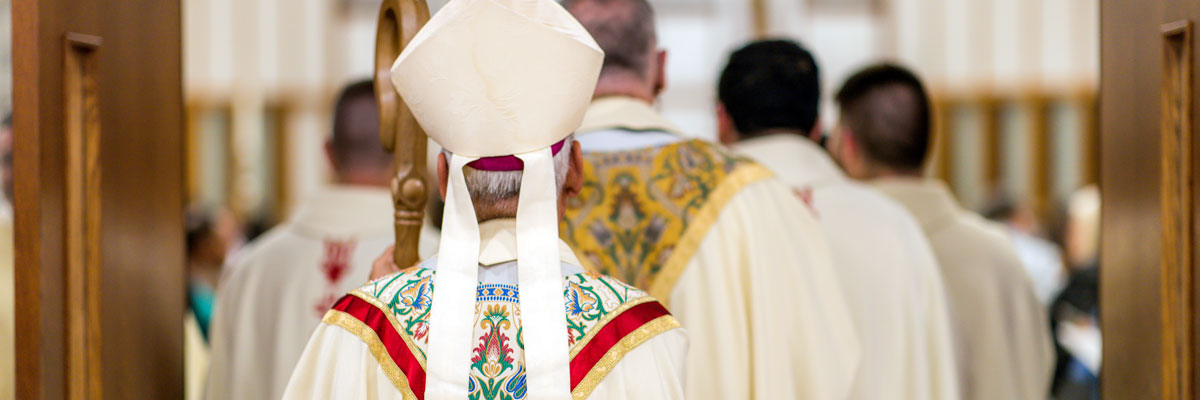Official Website of the
Catholic Diocese of Little Rock
Foundation of Catholic rituals, practices is found in Jewish tradition
Published: May 3, 2008
By Dr. Linda Webster
From the altar to the procession up the aisle, from the scriptural prayers of the liturgy to our belief in almighty God, we Catholics owe much to our Jewish brethren. Beginning with the actual structures where we worship, we find that the church, the altar, the vestments and the arrangement of the furnishings are related to temple worship.
We meet on the sabbath to worship together as did the Jews of the Diaspora in biblical times. The sacrifice is celebrated by a priest who is ritually vested with the garments of his office. He is anointed with oil in front of the faithful during the sacrament of holy orders just as Aaron and his sons were consecrated to the service of God. (Leviticus 8:2-12)
This idea of consecration, rooted in Jewish tradition, comes from separation — separating the profane from the holy by means of ritual and blessing.
An altar becomes an instrument of divine protection after consecration, a way of communicating to the faithful the direct link between God and his people gathered in prayer. The altar is a fixture throughout the Old Testament, always a place reserved for offering sacrifice to God.
In Deuteronomy 27:5-7, the altar is to be raised of stones untouched by iron, neither polished nor shaped, on which offerings are to be burnt while the people feast together.
The institution of the Eucharist at the Last Supper, a Passover meal, is prefigured by the offering of bread and wine made by Melchisedech as a priest of the most high God in thanksgiving for Abraham’s victory over the four tribes chronicled in Genesis 14:18-20.
How we conduct ourselves as Catholics can also be traced to early Jewish beliefs. Care of the poor is explicitly described in Leviticus, for example. Fields are not to be fully reaped and gleanings are to be left for the poor to gather. (19:9-10)
Strangers, orphans and widows are all included in this admonition as all are potentially helpless and open to victimization. The landowner is blessed by the giving of food just as those receiving the food are blessed by the sustenance.
In addition, fasting, giving alms to the poor, forgiveness of debts and transgressions and public penance all have their roots in Hebrew Scripture. Most importantly, the fulfillment of the promises of the Old Testament are chronicled in the New Testament (Matthew 5:17-18). Jesus’ birth in Bethlehem (Luke 2:4-5,7) is foretold in Micah 5:2 as is his birth to a virgin (Isaiah 7:14 and Luke 1:26-27, 30-31) and the subsequent flight to Egypt (Hosea 7:1 and Matthew 2-14-15).
Just as it was foretold in Psalms 78:2-4, “All these things Jesus spoke to the multitudes in parables, and he did not speak to them without a parable, so that what was spoken through the prophet might be fulfilled, saying, ‘I will open my mouth in parables; I will utter things hidden since the foundation of the world.’” (Matthew 13:34-35)
In short, the new covenant embodied by Christ’s words and actions grows directly out of the old — that we are the people of God. But while this new covenant requires us to understand our relationship to God through our faith in Christ and a life dedicated to responding to God’s call, rather than to the rituals proscribed by Jewish law, it is through an understanding of that old covenant that we appreciate Christ’s sacrifice and the privileges of our Catholic inheritance.
Dr. Linda Webster, a member of St. Mark Church in Monticello, has a bachelor’s degree in theology from St. Gregory University in Shawnee, Okla.









